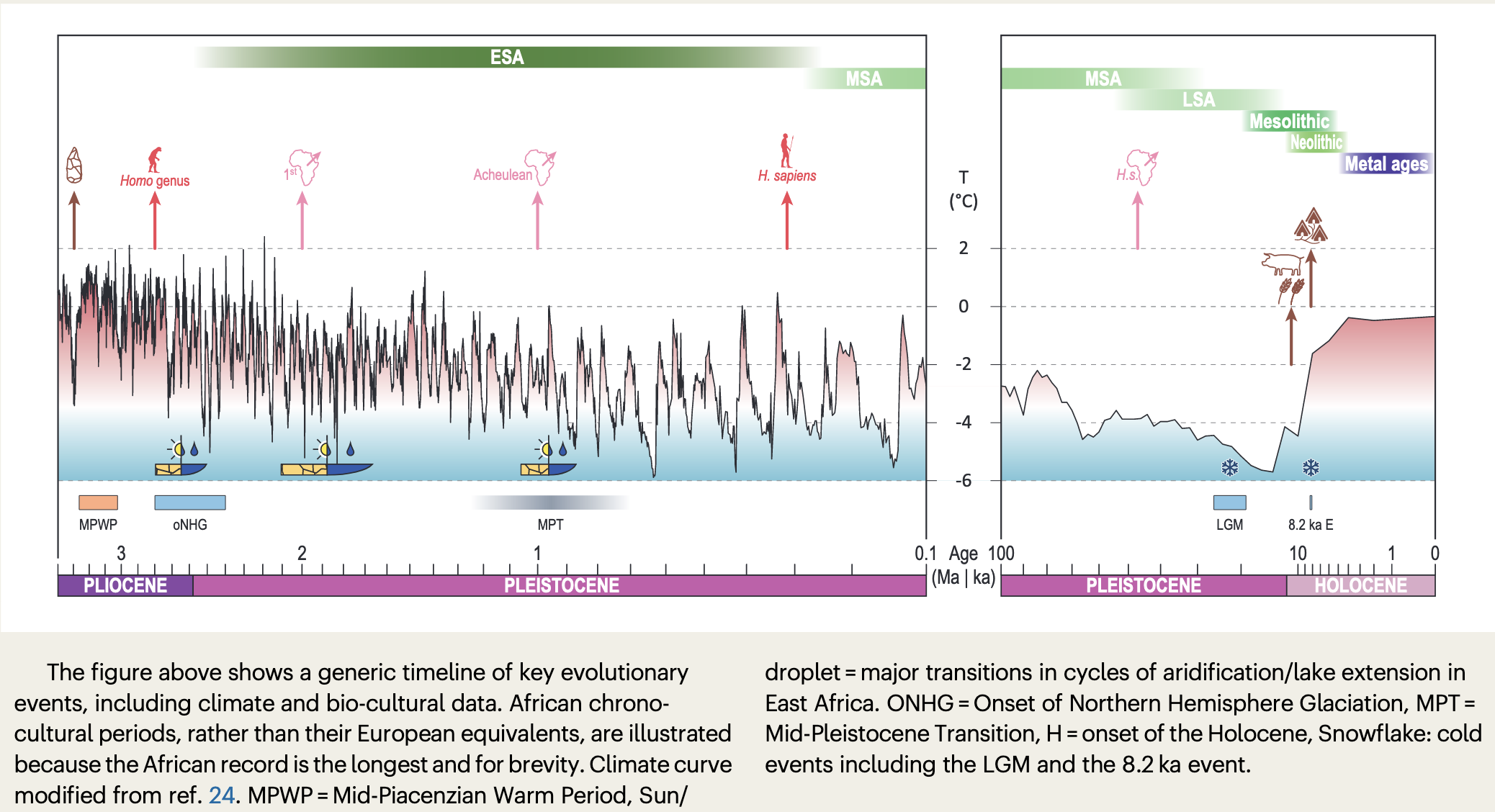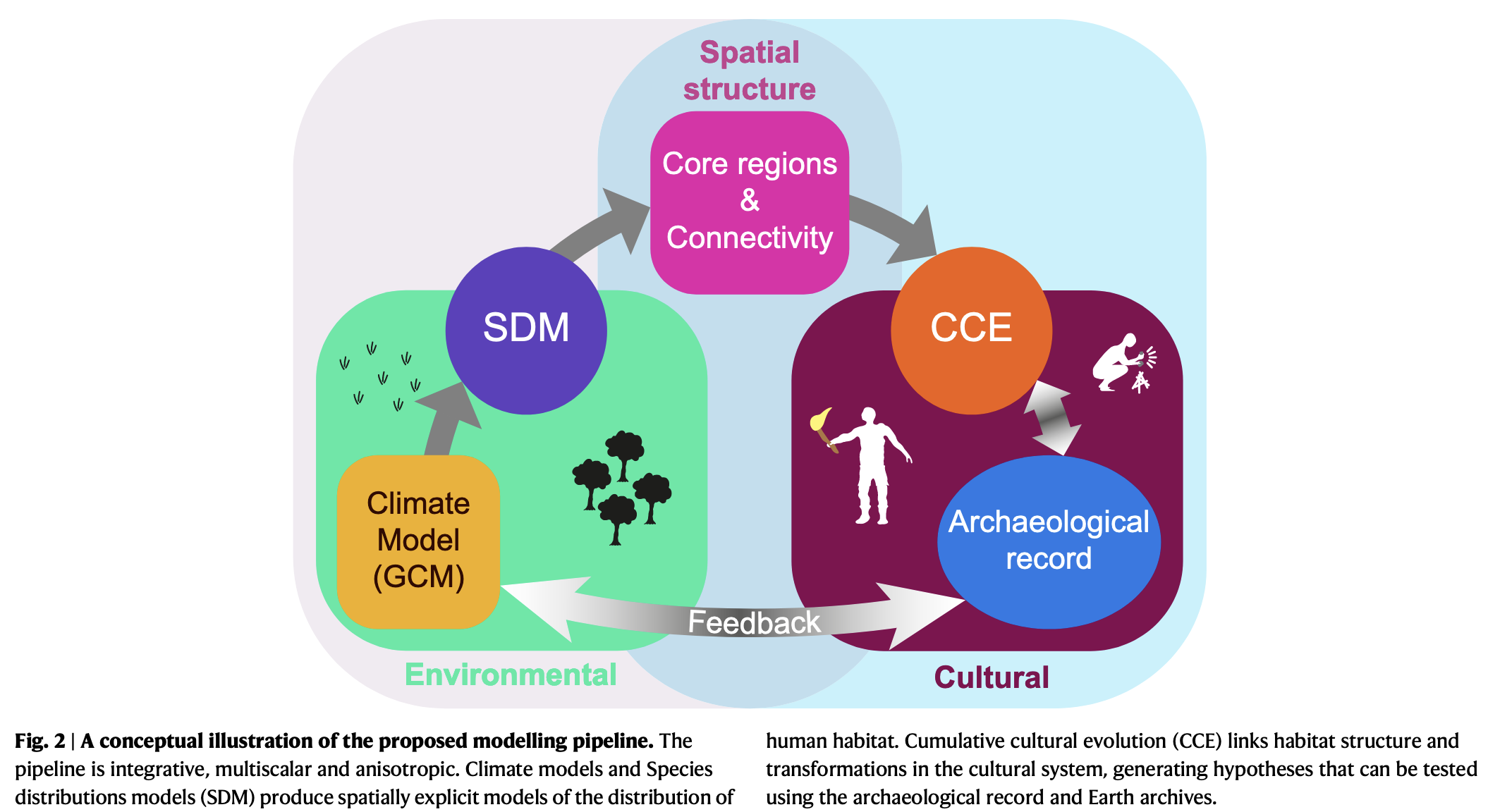文章信息:Burke, A., Grove, M., Maier, A., Wren, C., Drapeau, M., Poisot, T., Moine, O., Boisard, S., & Bruxelles, L. (2025). The archaeology of climate change: a blueprint for integrating environmental and cultural systems. Nature Communications, 16(1), 5289. https://doi.org/10.1038/s41467-025-60450-9
整理人:徐嘉苗,2025级硕士研究生
整理时间:2025年7月4日
Abstract: Cultural systems play an important role in shaping the interactions between humans and the environment, and are in turn shaped by these interactions. However, at present, cultural systems are poorly integrated into the models used by climate scientists to study the interaction of natural and anthropogenic processes (i.e. Earth systems models) due to pragmatic and conceptual barriers. In this Perspective, we demonstrate how the archaeology of climate change, an interdisciplinary field that uses the archaeological record to explore human-environment interactions, is uniquely placed to overcome these barriers. We use concepts drawn from climate science and evolutionary anthropology to show how complex systems modeling that focuses on the spatial structure of the environment and its impact on demographic variables, social networks and cultural evolution, can bridge the gap between large-scale climate processes and local-scale social processes. The result is a blueprint for the design of integrative models that produce testable hypotheses about the impact of climate change on human systems.
摘要:文化系统在塑造人与环境之间的相互作用方面发挥着重要作用,反过来又被这些相互作用所塑造。然而,目前气候学家用于研究自然和人为过程相互作用的模型(即:地球系统模型)中,由于实用主义和概念上的障碍,文化系统整合得很差。在这一视角下,我们展示了气候变化考古学——一个利用考古记录来探索人类与环境相互作用的跨学科领域——是如何独特地克服这些障碍的。我们使用从气候科学和进化人类学中得出的概念来说明关注环境的空间结构及其对人口变量、社会网络和文化进化的影响的复杂系统建模如何能够弥合大尺度气候过程和局域尺度社会过程之间的鸿沟。其结果是设计综合模型的蓝图,以产生关于气候变化对人类系统影响的可检验的假设。
1. 研究背景
2. 研究意义
3. 研究方法
4. 主要结论
5. 研究展望
6. 研究主要图表

01 关键进化事件谱系时间轴

02 建模工作流程

03 建模流程概念性说明
原文链接:https://www.nature.com/articles/s41467-025-60450-9
原文转引:https://mp.weixin.qq.com/s/PaUNl83JZePwB3XGqbNuxA